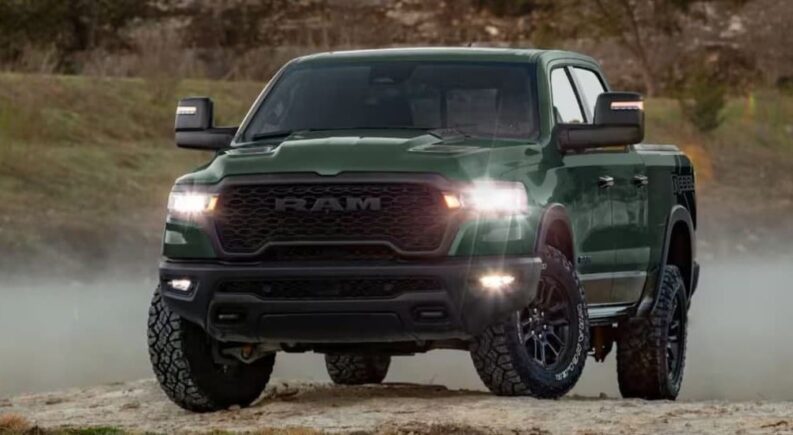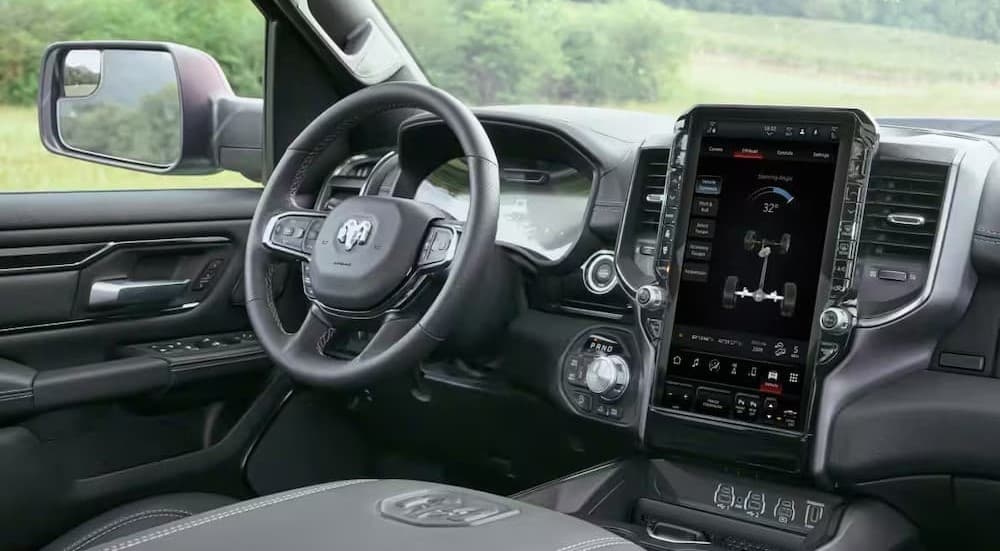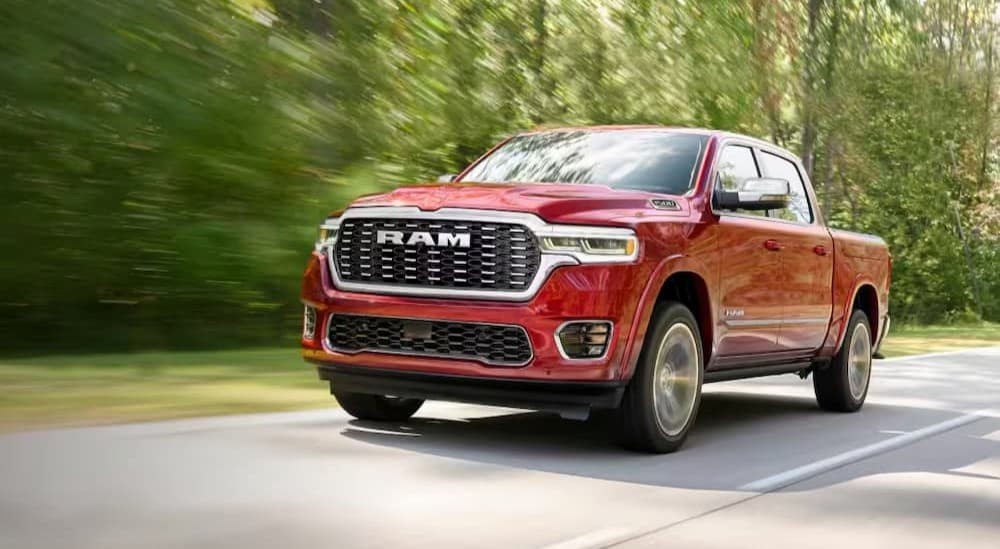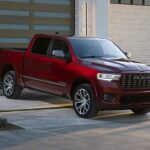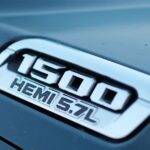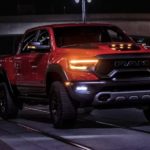Rumors of the HEMI’s demise have been greatly exaggerated, but can it compete with the Ram 1500’s new Hurricane engine? Fans of the iconic V8 mourned when Ram announced the HEMI’s retirement after the 2024 model year, but a combination of factors has brought the engine back as an optional upgrade for the 2026 Ram 1500.
A 3.6-liter Pentastar V6 remains the standard engine—offering promising potential with 305 hp, a mild hybrid system, and up to 26 MPG on the highway—but drivers seeking the most from their full-size Ram 1500 are unlikely to settle for the base offering when the HEMI and Hurricane are available. Each engine brings unique advantages, raising the bar when it comes to performance, towing, and fuel economy. So, how do you choose? Let’s explore the HEMI’s history, its brief absence, and how it compares to the Hurricane in key areas before you search for your 2026 Ram 1500 for sale.
The Rich Legacy of the HEMI V8
The HEMI has been an automotive icon since its debut in 1951 as the FirePower V8. The design adopted the HEMI name with the second-generation model in 1964, though its 7.0-liter displacement earned it the nickname “elephant engine.” Initially limited to motorsports, the 426 HEMI debuted in NASCAR under the hood of Richard Petty’s Plymouth Belvedere in 1964. Chrysler soon offered it to the public as an optional add-on for the Dodge Dart, Dodge Coronet, and Plymouth Fury.
The HEMI has continued to evolve, leveraging new technology to meet modern standards while delivering the power drivers expect. The third-generation HEMI, introduced in 2003, marked a shift, moving away from the original hemispherical combustion chamber and adopting variable displacement technology to deactivate cylinders under light loads for improved fuel economy. From the Hellcat to the Hellephant, a 7.0-liter version honoring its original nickname, the HEMI has powered some of the 21st century’s most thrilling Ram and Dodge vehicles.
The HEMI’s Brief Hibernation and Revival
Why would Ram discontinue such a legendary engine? Three main factors drove this decision. First, there is an industry-wide shift toward smaller, more efficient engines. With hybrid and electric vehicle technology advancing and stricter federal regulations, the HEMI’s size made it less viable. However, the current administration’s plan to roll back efficiency standards has made the HEMI a feasible option again, though Ram’s parent company, Stellantis, remains committed to its Dare Forward 2030 plan for achieving carbon net-zero emissions by 2038.
The second factor is customer demand. Ram CEO Tim Kuniskis estimated that discontinuing the HEMI for 2026 could have led to 30,000 lost sales, a significant blow after a challenging five years that saw Ram’s sales drop 41 percent since 2019. While the HEMI inspires strong loyalty, V8 sales have declined since 2020, when they accounted for 65 percent of registered pickups, falling to 38 percent by 2024, signaling a shift toward four-cylinder and six-cylinder alternatives.
Still, Ram reversed its decision to drop the HEMI, aiming to boost its position in full-size sales charts. “Ram screwed up when we dropped the HEMI—we own it and we fixed it,” said Kuniskis. “We’re not just bringing back a legendary V8 engine; we’re igniting an assertive product plan and expanding the freedom of choice in powertrain for our customers.”
The third reason for the HEMI’s brief absence was the introduction of the new Hurricane I-6. Displacing 3.0 liters, this inline-six engine, with its twin-turbocharged design, improves power and efficiency. Ram offers two versions for the 2026 Ram 1500: a standard model producing 420 hp and a High Output version delivering up to 540 hp and 521 lb-ft of torque. With a maximum towing capacity of 11,610 lbs and an estimated 25 MPG on the highway, the Hurricane combines impressive power and fuel economy.
HEMI vs Hurricane: Which Engine Reigns Supreme?
The HEMI is a storied engine, but how does it compare to the Hurricane I-6 in the areas most valued by pickup drivers? Let’s examine how the two engines stack up when it comes to horsepower, torque, towing capacity, efficiency, and availability to help you choose the right engine for your 2026 Ram 1500.
Unleashed Performance: Power and Torque
The 5.7-liter HEMI is a performance icon, but the twin-turbocharged Hurricane gives it strong competition. The V8 produces 395 hp and 410 lb-ft of torque, solid figures for the full-size segment. Ram has enhanced the HEMI with its eTorque mild hybrid system, featuring a 48-volt electric motor-generator that boosts performance and efficiency. Introduced in 2019, this mild-hybrid HEMI blends advanced technology with the classic HEMI experience, offering a compelling package for those seeking both.
For one of the most powerful engines in today’s full-size pickup market, the Hurricane is the answer. Debuting in the 2022 Jeep Grand Wagoneer and arriving in the Ram 1500 for 2025, its twin turbochargers enable the inline-six to produce up to 540 hp in the High Output version. Unlike the HEMI, the Hurricane skips the eTorque system, but drivers won’t mind when accelerating from zero to 60 mph in as little as 4.2 seconds.
Fuel Efficiency: Balancing Power and Savings
The HEMI and Hurricane each employ strategies to enhance fuel efficiency. The HEMI uses Ram’s eTorque mild hybrid system to maximize miles per gallon, while the Hurricane relies on twin turbochargers to extract power from a smaller engine, saving fuel. Comparing their efficiency is difficult, as Ram hasn’t released 2026 data; however, the figures should align with those of the 2024 and 2025 models.
The two-wheel drive Hurricane slightly outperforms the HEMI. It gets 18 MPG in the city, 25 MPG on the highway, and 21 MPG combined, compared to the HEMI’s 18 MPG in the city, 23 MPG on the highway, and 20 MPG combined. In four-wheel drive, both engines achieve 19 MPG combined. The Hurricane pulls ahead with 24 MPG on the highway to the HEMI’s 22 MPG on the highway, but the HEMI does 1 MPG better in the city.
Towing Capacity: Hauling Heavy Loads
Horsepower, torque, and fuel economy are important, but a full-size truck’s engine is judged by its towing ability. Ram is a favorite among tradesmen, contractors, ranchers, and professionals who prioritize performance, making towing capacity critical. The HEMI leverages all eight cylinders to deliver 11,320 lbs of maximum towing capacity and 1,750 lbs of payload.
It’s a strong performance, but the Hurricane surpasses it with 11,610 lbs of towing capacity and 1,930 lbs of payload. The High Output Hurricane sacrifices some capacity for its 540 hp, offering 10,000 lbs of towing and 1,490 lbs of payload, but it remains impressive for a top-tier engine.
Availability Across Trims
The HEMI’s return has sparked excitement, but its availability depends on the trim. The V8 is an optional upgrade on the Tradesman, Express, Warlock, Big Horn, and Laramie trims, and is included at no extra cost on the Limited and Limited Longhorn trims. Ram plans to offer the HEMI on the Rebel trim, but no timeline has been confirmed.
The Hurricane is more widely available, serving as the standard engine on the Laramie, Rebel, RHO, and Tungsten trims, and an option on every other trim. The Hurricane is also available with a wider range of cab and bed configurations.
The Verdict: Choosing Your Ram 1500 Powertrain
It’s challenging to judge the HEMI and Hurricane based solely on statistics. The twin-turbocharged Hurricane takes an early lead in horsepower and towing capacity, but fuel economy is harder to differentiate. Both engines use advanced technology to deliver top performance, towing, and efficiency, with the HEMI leveraging its mild hybrid system and the Hurricane relying on turbochargers to enhance the Ram’s value. Ultimately, the choice comes down to personal preference. If you’re a traditionalist who believes every full-size pickup needs a robust V8, the HEMI is the clear winner. If you’re eager to embrace the future of the pickup market, the Hurricane is hard to overlook.

